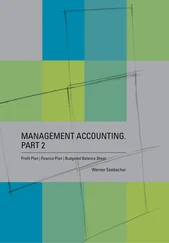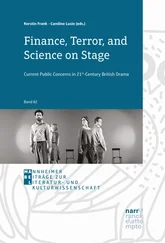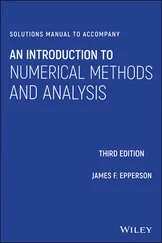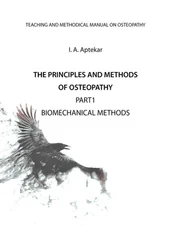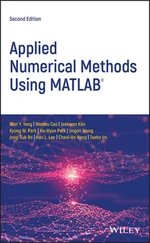The chapters in this part discuss both new as well as established methods to gain a deep understanding of the foundations of the finite difference method and its applications to finance, and beyond:
Defining stability for initial value problems, consistency and the Lax Equivalence Theorem.
Modern stability analysis for initial boundary value problems : discrete maximum principle, convergence.
Six ways to compute sensitivities.
A compact introduction to complex analysis: the Complex Step Method (CSM).
A good working knowledge of the topics in Part Cis essential in order to proceed in an effective manner.
Part D( Chapters 18to 22) introduces a number of modern and popular finite difference methods (approximately six) to approximate the solution of initial boundary value problems for two-factor partial differential equations. To our knowledge, this is the only book that discusses these methods as well as their comparative strengths together with their applications to option pricing and hedging.
In this part we offer a number of robust and accurate schemes for a range of PDEs:
Soviet Splitting (Marchuk, Yanenko, Strang).
Alternating Direction Explicit (ADE) (Saul'yev)
Method of Lines (MOL).
Front-fixing and variational methods for free boundary value problems.
We lay the mathematical foundations of all splitting methods by introducing semi-group theory and generalised exponential functions. In short, these schemes in combination with the PDE preprocessing techniques in Part Bopen up a world beyond the perennial Crank–Nicolson and Alternating Direction Implicit (ADI) methods.
A good working knowledge of the algorithms in Part Dis essential. In particular, the ability to program these algorithms (in C++ for obvious reasons) is ideal. Algorithms should work on paper and in the computer.
Part E( Chapters 23to 26) is concerned with applications of the techniques from the first twenty-two chapters. We discuss finite difference schemes for one-factor and two-factor, stochastic volatility, and interest problems. We also revisit some earlier chapters with a view to examining them in even more detail or from new perspectives. Finally, we offer tips and guidelines on extending the results in this book to other finance problems.
This part uses most of the mathematical and numerical techniques of the first twenty-two chapters, and we apply them to a range of linear and nonlinear PDEs. For each problem, we can preprocess it using the techniques in Part Bbefore deciding which numerical schemes from Part Dto use. In particular, we scope the chapters by addressing the following problems and solutions:
Spread options with domain transformation with Yanenko, Predictor-Corrector and Marchuk two-cycle methods.
Asian option pricing using ADE. Clarification of some issues relating to boundary conditions. Modern ADI methods.
Interest rate models (CIR), Feller condition and energy inequalities. ADE method. Relationship with Heston model.
Monotone schemes (viscosity solution) for two-factor problems with mixed derivatives and applications to Uncertain Volatility Models (UVM).
One-factor and two-factor Hull–White models using ADE and MOL.
Who Should Read this Book?
This book has universal appeal because it is a focused and detailed introduction to the mathematical theory and foundations of ordinary and partial differential equations, their approximation by the finite difference method and subsequent applications to computational finance. It is suitable both as an entry-level introduction as well as a detailed treatment of modern methods as used by industry quants and MSc/MFE students in finance. The topics in the book have major applications to numerical analysis, science and engineering. In fact, most of the PDE/FDM methods have their origins in these fields.
For more information relating to computational finance, including links to resources and the author's online courses, please visit www.datasim.nl.
PART A Mathematical Foundation for One-Factor Problems
CHAPTER 1 Real Analysis Foundations for this Book
The beginner should not be discouraged if he finds he does not have the prerequisites for reading the prerequisites .
Paul Halmos
1.1 INTRODUCTION AND OBJECTIVES
In this chapter we introduce a number of mathematical concepts and methods that underlie many of the topics in this book. The most urgent attention points revolve around functions of real variables, their properties and the ways they are used in applications. We discuss the most important topics from real analysis to help us in our understanding of partial differential equations (PDEs). A definition of real analysis is:
In mathematics, real analysis is the branch of mathematical analysis that studies the behavior of real numbers, sequences and series of real numbers, and real functions. Some particular properties of real-valued sequences and functions that real analysis studies include convergence, limits, continuity, smoothness, differentiability and integrability.
Real analysis is distinguished from complex analysis, which deals with the study of complex numbers and their functions.
(Wikipedia)
A related branch of mathematics is calculus, which we learn at school:
Calculus, originally called infinitesimal calculus or ‘the calculus of infinitesimals’, is the mathematical study of continuous change, in the same way that geometry is the study of shape and algebra is the study of generalizations of arithmetic operations.
It has two major branches, differential calculus and integral calculus; the former concerns instantaneous rates of change, and the slopes of curves, while integral calculus concerns accumulation of quantities, and areas under or between curves. These two branches are related to each other by the fundamental theorem of calculus, and they make use of the fundamental notions of convergence of infinite sequences and infinite series to a well-defined limit.
(Wikipedia)
In practice, there is a distinction between calculus and real analysis. Calculus entails techniques (and tricks) to differentiate and integrate functions. It does not discuss the conditions under which a function is continuous or differentiable. It assumes that it is allowed to carry out these operations on functions. Real analysis, on the other hand, does discuss these issues and more; for example:
Continuous functions: How do we recognise them and prove that a function is continuous?
The different kinds of discontinuous functions.
Differential calculus from a real-analysis viewpoint.
Taylor's theorem.
An introduction to metric spaces and Cauchy sequences.
In our opinion, these topics are necessary prerequisites for the rest of this book.
Knowledge of vector (linear) analysis and numerical linear algebra is also a prerequisite for computational finance. To this end, we devote Chapters 4and 5to these topics. Finally, complex variables and complex functions (which are at the heart of complex analysis) are introduced in Chapter 16. We use the notation  to mean ‘for all’ and
to mean ‘for all’ and  to mean ‘there exists’.
to mean ‘there exists’.
In this section we are mainly concerned with real-valued functions of a real variable, that is  . In rough terms, a continuous function is one that can be drawn by hand without taking the pen from paper. In other words, a continuous function does not have jumps or breaks, but it is allowed to have sharp bends and kinks. Examples of continuous functions are:
. In rough terms, a continuous function is one that can be drawn by hand without taking the pen from paper. In other words, a continuous function does not have jumps or breaks, but it is allowed to have sharp bends and kinks. Examples of continuous functions are:
Читать дальше

 to mean ‘for all’ and
to mean ‘for all’ and  to mean ‘there exists’.
to mean ‘there exists’. . In rough terms, a continuous function is one that can be drawn by hand without taking the pen from paper. In other words, a continuous function does not have jumps or breaks, but it is allowed to have sharp bends and kinks. Examples of continuous functions are:
. In rough terms, a continuous function is one that can be drawn by hand without taking the pen from paper. In other words, a continuous function does not have jumps or breaks, but it is allowed to have sharp bends and kinks. Examples of continuous functions are:

